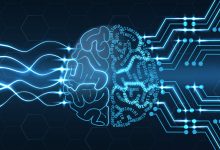Breaking Barriers: The Importance of equal access to education
Breaking Barriers: The Importance of Equal Access to Education
Education is widely recognized as a universal right and a key determinant of an individual’s socio-economic mobility and personal development. It not only benefits individuals but also shapes societies and economies. However, access to education remains unequal in many parts of the world, depriving countless individuals, especially those from marginalized or disadvantaged backgrounds, of the opportunities it brings. Breaking barriers to equal access to education is not just a moral imperative; it is crucial for creating a fairer and more prosperous world.
Equal access to education means that every individual has the opportunity to receive a quality education, regardless of their gender, ethnicity, economic status, or geographical location. Sadly, this ideal is far from being a reality for millions of people. Discrimination, poverty, armed conflict, and cultural norms often impede access to education, particularly for girls and women, children with disabilities, and those living in remote or impoverished areas.
One of the most prominent barriers to education is gender inequality. UNESCO estimates that about 132 million girls around the world are out of school. Cultural norms, early marriage, household chores, and the lack of safe and inclusive learning environments are among the factors that hinder girls’ access to education. When girls are denied education, the consequences are dire not only for individuals but also for societies. Educating girls not only breaks the cycle of poverty but also leads to healthier families, reduced child mortality rates, lower population growth, and enhanced community development.
Similarly, children with disabilities face numerous obstacles in accessing quality education. A lack of inclusive learning environments, limited accommodations, inaccessible infrastructure, and negative societal attitudes often marginalize these children, preventing them from reaching their full potential. The rights of children with disabilities to receive inclusive education must be protected, allowing them to develop necessary skills, contribute to society, and live independent lives.
Furthermore, poverty remains a significant barrier to education. According to the United Nations, nearly 258 million children and youth worldwide are out of school, with poverty being one of the main reasons. Poverty not only limits individuals’ abilities to afford schooling but also exacerbates other barriers such as child labor, early marriage, and inadequate healthcare. Breaking the cycle of poverty requires investing in education, as it equips individuals with the knowledge and skills needed to create economic opportunities and escape the vicious circle of deprivation.
Breaking barriers to education also involves addressing the disparities that exist between urban and rural areas. In many developing countries, rural populations have limited access to schools, while the few available are often poorly equipped and staffed. Lack of transportation, long distances, and inadequate infrastructure further hinder access. Bridging this gap necessitates investment in rural education facilities, promoting the recruitment and training of qualified teachers, and providing appropriate resources and technology to ensure equal opportunities for rural students.
Moreover, equal access to education is not just confined to primary and secondary education. It also extends to higher education and lifelong learning opportunities. Restricting access to tertiary education based on income or social status perpetuates inequality and hampers social mobility. By providing affordable and accessible higher education, societies can facilitate the development of a skilled workforce, foster innovation, and break the cycle of intergenerational poverty.
In conclusion, breaking barriers to equal access to education is an imperative for a just and prosperous society. Education empowers individuals, enables them to make informed decisions, fosters social cohesion, and drives economic growth. Governments, policymakers, and stakeholders must prioritize efforts to eliminate obstacles such as gender inequality, poverty, disability discrimination, and rural-urban disparities. By ensuring that everyone has an equal opportunity to receive a quality education, we can build a brighter future for individuals, communities, and our global society.



